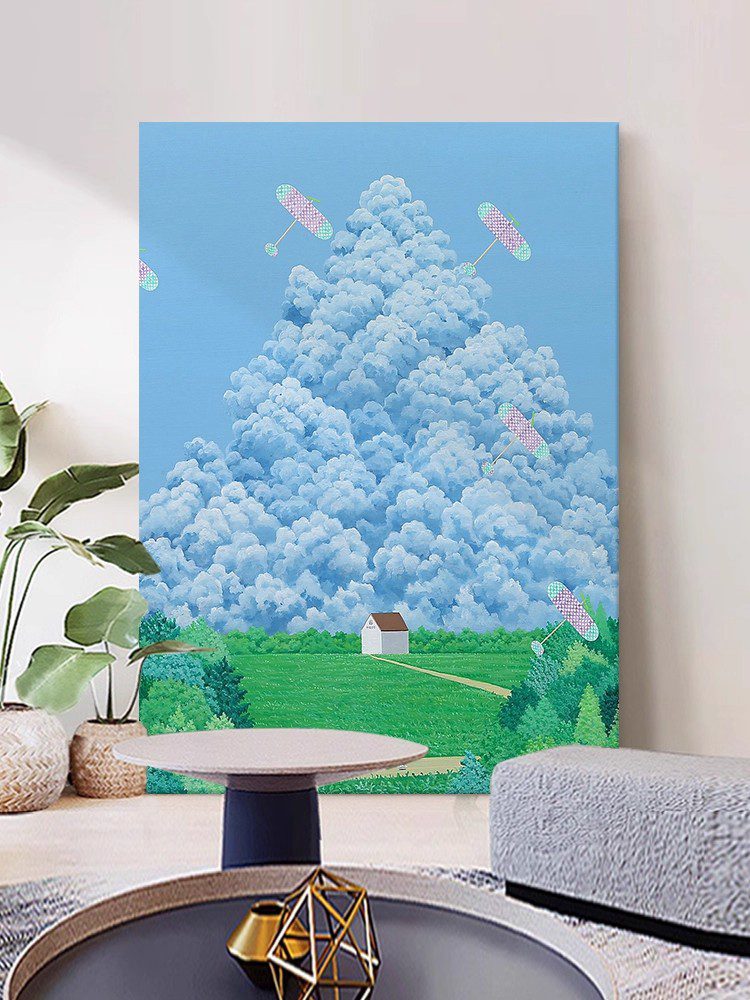Conveying Emotion in Hand-Painted Oil Artworks: Techniques for Depth and Resonance
Expressing emotion through oil painting requires more than technical skill—it demands intentionality in every brushstroke, color choice, and compositional decision. Below are methods to infuse your work with emotional authenticity, enabling viewers to connect with the narrative or mood you aim to convey.
Harnessing Color Psychology and Contrast
- Warm vs. Cool Tones: Use warm hues like reds, oranges, and yellows to evoke energy, passion, or comfort. For example, a sunset rendered in fiery gradients might symbolize longing or hope. Conversely, cool blues and greens can create calmness, isolation, or melancholy. A seascape with muted teal waves against a gray sky could reflect inner turmoil or serenity.
- Saturation and Intensity: Bold, vivid colors (e.g., a crimson dress against a pale background) amplify drama or intensity, while desaturated or grayed tones (like a faded lavender sky) suggest nostalgia or subtlety. Experiment with layering transparent glazes to mute or enrich colors, altering their emotional weight.
- Dynamic Contrasts: Pair complementary colors (e.g., violet and yellow) to create visual tension, symbolizing conflict or excitement. High-contrast lighting—such as a single light source illuminating a figure’s face against deep shadows—can heighten emotions like fear, intimacy, or revelation.
Mastering Brushwork and Texture to Reflect Mood
- Expressive Strokes: Loose, gestural marks (e.g., thick, swirling impasto) convey energy, chaos, or spontaneity. A portrait with frenzied brushstrokes around the eyes might suggest anxiety or passion. In contrast, smooth, blended strokes evoke tranquility or control, as seen in calm landscapes or still-life compositions.
- Directional Movement: Use brush direction to guide the viewer’s eye and reinforce emotion. Diagonal lines (e.g., tilted trees or slanted buildings) create instability or urgency, while horizontal lines (like a calm horizon) suggest peace. Vertical strokes can imply strength or isolation, depending on context.
- Tactile Variety: Incorporate mixed textures—such as sand, paper, or fabric—into the paint surface to add physicality. A rough, cracked layer might symbolize decay or resilience, while a glossy, smooth area could represent purity or artificiality. Textures engage the viewer’s sense of touch, deepening emotional engagement.
Structuring Composition to Amplify Narrative
- Focal Points and Hierarchy: Direct attention to elements that embody the core emotion. For instance, a solitary figure in the center of a vast, empty canvas might emphasize loneliness, while a crowded market scene with a brightly dressed vendor could celebrate vibrancy or community. Use size, color, or detail to prioritize subjects.
- Negative Space and Isolation: Empty areas around a subject can intensify focus and emotion. A small figure dwarfed by a blank background might evoke vulnerability or introspection. Conversely, filling the canvas with activity leaves no room for escape, amplifying claustrophobia or chaos.
- Symbolic Elements: Integrate objects or motifs with emotional resonance. A wilting flower could represent loss, while a broken clock might symbolize stagnation or regret. Ensure symbols align with the overall narrative to avoid confusion. For example, a stormy sky paired with a crumbling house reinforces themes of destruction or upheaval.
Lighting and Atmosphere to Set the Tone
- Natural vs. Artificial Light: Soft, diffused light (e.g., morning mist) creates ethereality or hope, while harsh, directional light (like a spotlight) adds drama or tension. A candlelit room with flickering shadows might evoke mystery or intimacy, depending on the subject’s expression.
- Time of Day: Golden-hour lighting (warm, low-angle sun) often symbolizes warmth, nostalgia, or transition. Midday brightness can feel neutral or sterile, while twilight’s blue tones might suggest melancholy or reflection. Align the time of day with the emotional arc of your piece.
- Atmospheric Effects: Use glazes or dry brushing to simulate fog, rain, or dust. These elements immerse the viewer in the scene’s emotional climate—a rain-soaked street could feel romantic or desolate, depending on accompanying colors and figures.
By weaving these techniques into your practice, you can transform technical choices into emotional storytelling. The interplay of color, texture, composition, and light creates a language that transcends words, inviting viewers to experience the heartbeat of your artwork.
